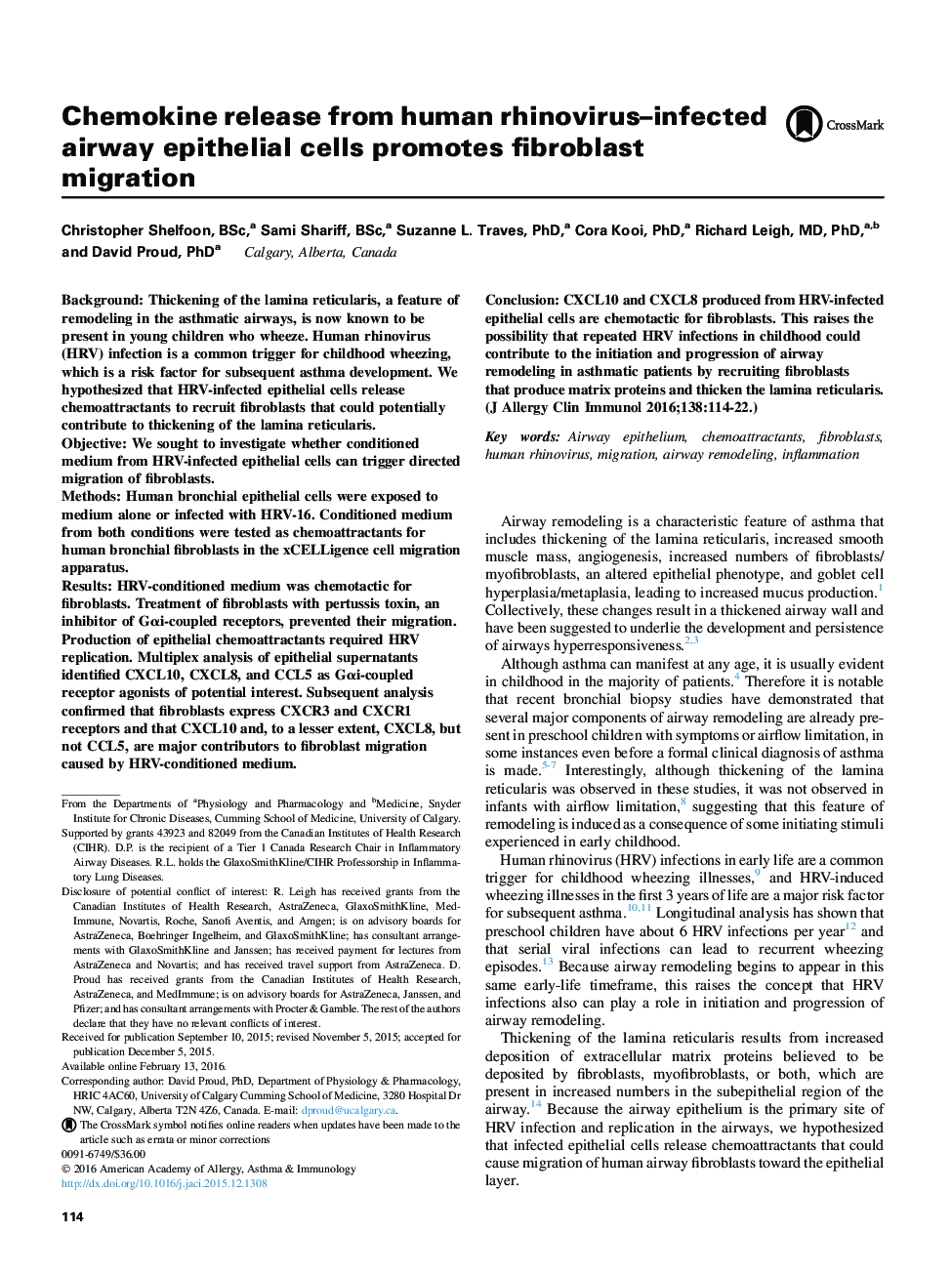| کد مقاله | کد نشریه | سال انتشار | مقاله انگلیسی | نسخه تمام متن |
|---|---|---|---|---|
| 6062285 | 1201839 | 2016 | 13 صفحه PDF | دانلود رایگان |
BackgroundThickening of the lamina reticularis, a feature of remodeling in the asthmatic airways, is now known to be present in young children who wheeze. Human rhinovirus (HRV) infection is a common trigger for childhood wheezing, which is a risk factor for subsequent asthma development. We hypothesized that HRV-infected epithelial cells release chemoattractants to recruit fibroblasts that could potentially contribute to thickening of the lamina reticularis.ObjectiveWe sought to investigate whether conditioned medium from HRV-infected epithelial cells can trigger directed migration of fibroblasts.MethodsHuman bronchial epithelial cells were exposed to medium alone or infected with HRV-16. Conditioned medium from both conditions were tested as chemoattractants for human bronchial fibroblasts in the xCELLigence cell migration apparatus.ResultsHRV-conditioned medium was chemotactic for fibroblasts. Treatment of fibroblasts with pertussis toxin, an inhibitor of Gαi-coupled receptors, prevented their migration. Production of epithelial chemoattractants required HRV replication. Multiplex analysis of epithelial supernatants identified CXCL10, CXCL8, and CCL5 as Gαi-coupled receptor agonists of potential interest. Subsequent analysis confirmed that fibroblasts express CXCR3 and CXCR1 receptors and that CXCL10 and, to a lesser extent, CXCL8, but not CCL5, are major contributors to fibroblast migration caused by HRV-conditioned medium.ConclusionCXCL10 and CXCL8 produced from HRV-infected epithelial cells are chemotactic for fibroblasts. This raises the possibility that repeated HRV infections in childhood could contribute to the initiation and progression of airway remodeling in asthmatic patients by recruiting fibroblasts that produce matrix proteins and thicken the lamina reticularis.
Journal: Journal of Allergy and Clinical Immunology - Volume 138, Issue 1, July 2016, Pages 114-122.e4
